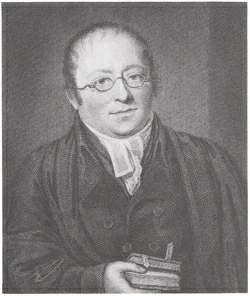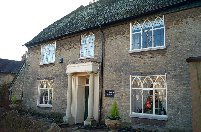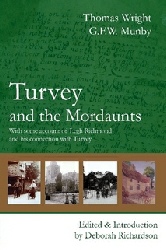

©2015 Deborah Richardson

Privacy Policy
Copyright

Rev. Legh Richmond was one of Turvey's most famous rectors.
He was born in Liverpool on 29 January 1772, one of six children of Henry Richmond MD and Catherine Atherton of Walton Hall, Liverpool. He injured his left foot in a childhood accident and was left with a lifelong limp.
He left Cambridge University in 1797.
He served on the Isle of Wight for many years, at Brading and Yaverland parishes. There is a plaque to his memory in Brading's beautiful church.
In 1805 he accepted the appointment of Chaplain to the Lock Hospital in London, but only stayed there for a few weeks.
In October 1805 he moved to Turvey where he remained for the next 22 years.
People flocked to his services from miles around and he worked incredibly hard for the villagers, including founding the Friendly Society to help the poor (and donating significantly to its coffers).
He had a laboratory for his children to use and encouraged them to do experiments at home. However, he discouraged them from mixing with the village children or from going to school.
His children, Nugent and Wilberforce predeceased him and he himself left this earth on 8 May 1827. He is buried in Turvey churchyard.
Places on the Isle of Wight with Connections to Legh Richmond
Brading -
Brading -
Shanklin Chine -
Arreton -
Sandown -
Richmond published a number of books which were, in their day, incredibly best sellers. These include 'The Dairyman's Daughter', 'Little Jane' and 'The Negro Servant'. These titles were originally published in The Christian Guardian (1809, 1810 & 1811)and were then united in one volume entitled 'The Annals of the Poor'.
He also wrote 'The Fathers of the English Church' between 1807-
Although Theo managed to contain a horrific outbreak of cholera on the voyage, 9 died and 2 were washed overboard, but died of yellow fever two months after arriving in Demerara.
Henry was Rector of Wyck-
Wilberforce had been destined to follow his father into the church. However, he caught tuberculosis (TB) and died in January 1825, aged just 18. This broke the Rev. Legh's heart, compounded all the more when the news of Nugent’s death reached him later in the year.
Four of his daughters (not Katherine) were to become the wives of Rectors and Vicars.
The Fascinating Family of Rev.Legh Richmond
Thank you to Rev. Richmond's great-
Richmond’s Children
Nugent -
Wilberforce -
Henrietta Anne died 28 September 1828
Theophilus Pelatt -
Legh Serle died 13 March 1862
Katherine died 9 March 1869
Henry Sylvester died 4 July 1872
Mary Catherine died 8 October 1876
Fanny died 28 December 1886
Charlotte Elizabeth died 20 October 1890
In 1893, Turvey rector, GFW Munby and Olney author, Thomas Wright, wrote a book about
the history of Turvey -
I have republished this book , combining both editions of the original.
Legh Richmond of Turvey


Rev Richmond lived in this house in Turvey High Street. It was the Rectory at the time.
It dates from the mid 1700's and is made of coursed limestone rubble.
Richmond is said to have hated the gothic windows.
It has been a Grade II listed building since 1987 and is now called Richmond House.
 Buy on Lulu
Buy on Amazon
Buy on Lulu
Buy on Amazon

The Turvey Web Site -
This website and its content is copyright of Deborah Richardson -
Any redistribution or reproduction of part or all of the contents in any form is prohibited other than the following:
You may print or download to a local hard disk extracts for your personal and non-
You may copy the content to individual third parties for their personal use, but only if you acknowledge the website as the source of the material
You may not, except with our express written permission, distribute or commercially exploit the content. Nor may you transmit it or store it in any other website or other form of electronic retrieval system.

